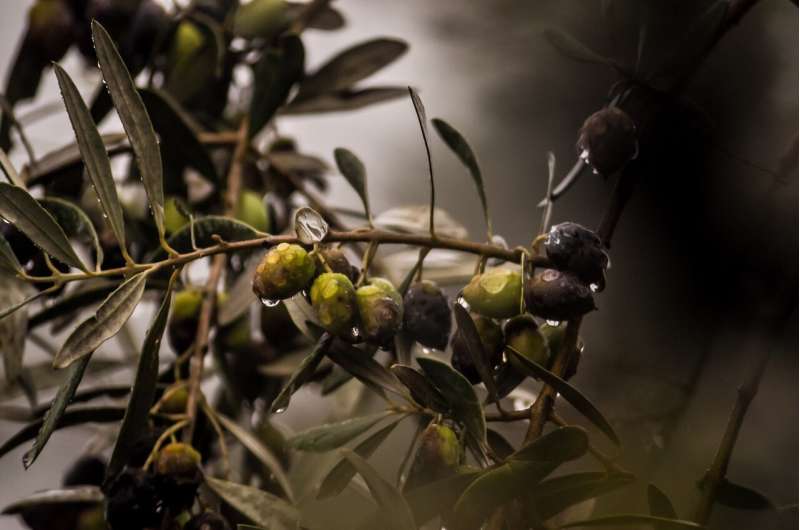Credit: CC0 Public Domain
Researchers from the Universities of Valencia and Cordoba, as well as from the Institute for Sustainable Agriculture of the Spanish National Research Council (CSIC), have studied the fungus that causes verticilosis, a disease that kills millions of olive trees. Through the observation of the olive root microbiome, they conclude that verticillium wilt is driven by a wide community of microorganisms that unite to attack plants, making researchers rethink how to cope with it. The results have been published in the prestigious journal BMC Plant Biology.
The work has its origin in the Master's Degree Thesis of Luis F. Arias-Giraldo, who completed the Bioinformatics Master at the University of Valencia. This course was supervised by researchers from the Institute for Integrative Systems Biology (I2SysBio) Vicente Arnau and Wladimiro Díaz, and Carlos P. Garay from the CSIC.
Verticillium wilt is one of the most devastating pests for the olive grove and one of the main phytosanitary problems in the sector. The disease, also known as "Root rot," is caused by a fungus –Verticillium dahliae– that remains in infected soils, colonizes the roots and clogs the vascular system until the plant dies, producing effects similar to those of a severe drought.
Vicente Arnau, professor at the department of Computer Architecture and Technology, points out that the infection is analyzed from the point of view of systems biology: "We do not focus on the interaction between two species. We analyze how all the species in the ecosystem of the olive tree interact."
The study has shown that the infection, for which there is no effective cure, is much more complex than was previously thought. The work has studied the dynamics of the microbiome of infected roots and concludes that the infection process involves many more contenders. Although the disease is initially directed by the verticillium fungus, it is not driven by a single species, but by a whole community of microorganisms that attack the tree.
The researcher from the Department of Biochemistry and Molecular Biology of the University of Córdoba Antonio Rodríguez Franco points out that the results suggest that the wilting of the olive tree by verticillium wilt "must be understood as a biological process of systems in which a complex interaction takes place."
According to the investigation, there are several fronts that occur in this type of microscopic warfare declared by the verticillium, but furthered by other organisms. As Arnau explains, "during the infection there is a biological succession of different types of parasites that could explain the parasitic alternations observed and described in many infectious systems."
Various types of fungi, bacteria, and protozoa act as a consortium to attack the tree. A series of opportunistic microbes, such as nematodes and amoebae, also come into play, which, although they do not initially participate in the infection, feed on the substances that the olive tree defenses generate to counteract the attack. Finally, the beneficial fungi that until now have maintained a symbiotic relationship with the roots of the tree change sides and become harmful to the plant itself.
This is, broadly speaking, the dynamics of a contest whose final result is the withering of thousands of olive trees in the Mediterranean basin, and which has been detailed after analyzing RNA samples and carrying out a metatranscriptomic study of different samples.
The results, according to the article, could contribute to focus future treatments to alleviate a disease that has increased in recent years due to the intensification of plantations in infected soils. At the moment, however, there are still several question marks to be resolved, such as the genes involved in the plant's defense processes and revealing why some olive species are immune to infection.
More information: Jose Manuel Martí et al. Metatranscriptomic dynamics after Verticillium dahliae infection and root damage in Olea europaea, BMC Plant Biology (2020). DOI: 10.1186/s12870-019-2185-0
Journal information: BMC Plant Biology
Provided by Asociacion RUVID
























